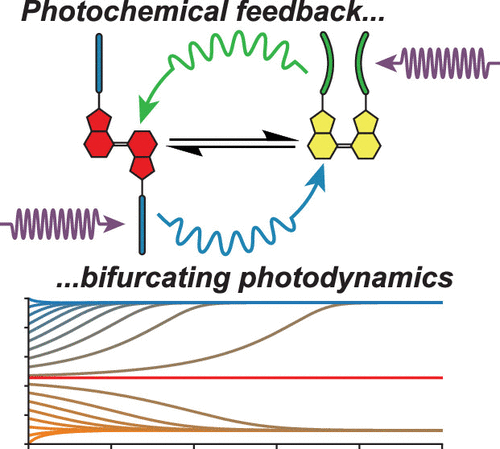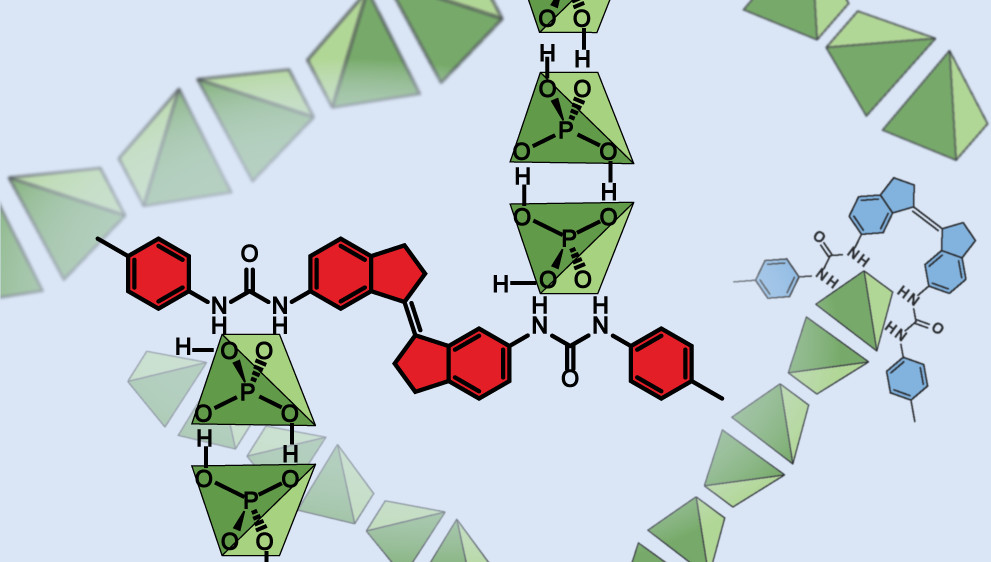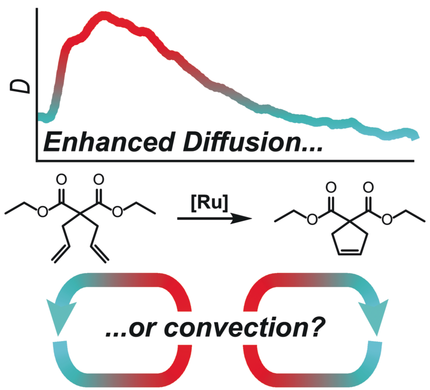Publications shown in reversed chronological order. Alternatively, see my Google Scholar or Orcid page.
2023
-

MacDonald, Thomas S. C.,
Tayebjee, Murad J. Y., Collins, Miles I., Kumarasamy, Elango, Sanders, Samuel N., Sfeir, Matthew Y., Campos, Luis M., and
McCamey, Dane R. J. Am. Chem. Soc. 2023, 145, 15275-15283.
The quintet triplet-pair state may be generated upon singlet fission and is a critical intermediate that dictates the fate of excitons, which can be exploited for photovoltaics, information technologies, and biomedical imaging. In this report, we demonstrate that continuous-wave and pulsed electron spin resonance techniques such as phase-inverted echo-amplitude detected nutation (PEANUT), which have emerged as the primary tool for identifying the spin pathways in singlet fission, probe fundamentally different triplet-pair species. We directly observe that the generation rate of high-spin triplet pairs is dependent on the molecular orientation with respect to the static magnetic field. Moreover, we demonstrate that this observation can prevent incorrect analysis of continuous-wave electron spin resonance (cw-ESR) measurements and provide insight into the design of materials to target specific pathways that optimize exciton properties for specific applications.
2021
-
Günther, Jan-Philipp, Fillbrook, Lucy L.,
MacDonald, Thomas S. C., Majer, Günter,
Price, William S., Fischer, Peer, and
Beves, Jonathon E. Science 2021, 371,
The apparent “boosted mobility” observed by Wang et al. (Reports, 31 July 2020, p. 537) is the result of a known artifact. When signal intensities are changing during a nuclear magnetic resonance (NMR) diffusion measurement for reasons other than diffusion, the use of monotonically increasing gradient amplitudes produces erroneous diffusion coefficients. We show that no boosted molecular mobility is observed when shuffled gradient amplitudes are applied.
-
J. Phys. Chem. Lett. 2021, 12, 1236–1243.
A chemical system is proposed that is capable of amplifying small optical inputs into large changes in internal composition, based on a feedback interaction between switchable fluorescence and visible-light photoswitching. This system would demonstrate bifurcating reaction kinetics under irradiation and reach one of two stable photostationary states depending on the initial composition of the system. This behavior would allow the system to act as a chemical realization of the flip-flop circuit, the fundamental element in sequential logic and binary memory storage. We use detailed numerical modeling to demonstrate the feasibility of the proposed behavior based on known molecular phenomena and comment on some of the conditions required to realize this system.
2020
-

Controlling Molecular Motion
MacDonald, Thomas S. C.
PhD thesis. Degree awarded by UNSW Sydney (School of Chemistry) (2020).
This thesis explores spatial control over chemical processes. The goal was to influence the diffusion of small molecules in solution, which could lead towards control over spatial distributions and the ability to create concentration gradients. The primary tool used to investigate this behaviour was diffusion NMR spectroscopy. It is widely recognised that major advances in chemistry arrive as a result of new tools, and here the development and application of new tools to measure diffusion is conducted in parallel. Chapter 2 describes the development of new techniques for acquiring and processing time-resolved diffusion NMR data with high time resolution. These methods are used repeatedly throughout this work to follow chemical processes through time-dependent changes in diffusion coefficients. This chapter also presents a new temperature-independent method of gradient calibration using methanol, simplifying the process of obtaining calibrated absolute measurements of diffusion by NMR spectroscopy. Chapter 3 investigates the controversial phenomenon of ‘enhanced diffusion’ of active catalysts as a means towards driving translational motion at the molecular scale. Using two model reactions, key results from the literature are reproduced experimentally but found to be caused by convection, not enhanced diffusion as had been reported. These results have wider implications for ongoing research into enhanced diffusion. Chapter 4 describes a different approach towards influencing the diffusion rates of small molecules by combining photoswitchable anion binding with antielectrostatic self-assembly of phosphate anions in solution. Contrary to the chemical intuition that like charges repel, the dihydrogen phosphate anion is found to self-associate to a remarkable extent in a polar solvent. These surprising findings reveal the complex solution state self-association of a common anion., and the polyanionic phosphate clusters formed in solution allow much greater control over the diffusive properties of the photoswitchable host than could be achieved otherwise. Chapter 5 contains a proposal for an all-photonic photoswitchable fluorescence feedback system that could amplify information and return an output as blue or green light. A theoretical model of this system is presented based on known molecular properties, and numerical modelling is used to illustrate the bifurcating and bistable dynamics of the proposed system. Preliminary experimental work on this topic is also presented.
-
J. Am. Chem. Soc. 2020, 142, 20014–20020.
Dihydrogen phosphate anions are found to spontaneously associate into anti-electrostatic oligomers via hydrogen bonding interactions at millimolar concentrations in DMSO. Diffusion NMR measurements supported formation of these oligomers, which can be bound by photoswitchable anion receptors to form large bridged assemblies of approximately three times the volume of the unbound receptor. Photoisomerization of the oligomer-bound receptor causes a decrease in diffusion coefficient of up to 16%, corresponding to a 70% increase in effective volume. This new approach to external control of diffusion opens prospects in controlling molecular transport using light.
2019
-
ChemPhysChem 2019, 20, 926–930.
A general procedure for measurement of time-resolved diffusion coefficients of molecular species by NMR is described, including the use of methanol for fast temperature-independent gradient calibration.
-
Angew. Chem. Int. Ed. 2019, 58, 18864–18867.
Abstract Intriguing reports of enhanced diffusion in enzymes and molecular catalysts have spurred significant interest in experimental and theoretical investigations, and the mechanism of this phenomenon is the topic of lively debate. Here we use time-resolved diffusion NMR methods to measure the diffusion coefficients (D) of small molecule species involved in chemical reactions with high temporal resolution. We show the enhanced diffusion of small molecules cannot be explained by reaction velocity, and that apparent measurements of enhanced diffusion by small molecules appear to be caused by bulk fluid flow processes such as convection.
2016
-
Mallo, Neil, Brown, Patrick T., Iranmanesh, Hasti,
MacDonald, Thomas S. C., Teusner, Matthew J., Harper, Jason B., Ball, Graham E., and
Beves, Jonathon E. Chem. Commun. 2016, 52, 13576–13579.
We report photochromic donor–acceptor Stenhouse adducts (DASAs) capable of fully reversible photoisomerization with visible light in organic solvents including chloroform, acetonitrile and benzene. The rates of photoisomerization and thermal reversion can be tuned by altering the electronics of the donor adduct. X-Ray crystallography and photo-NMR experiments unambiguously establish molecular structures.
 J. Am. Chem. Soc. 2023, 145, 15275-15283.
J. Am. Chem. Soc. 2023, 145, 15275-15283. Science 2021, 371,
Science 2021, 371, J. Phys. Chem. Lett. 2021, 12, 1236–1243.
J. Phys. Chem. Lett. 2021, 12, 1236–1243. J. Am. Chem. Soc. 2020, 142, 20014–20020.
J. Am. Chem. Soc. 2020, 142, 20014–20020. ChemPhysChem 2019, 20, 926–930.
ChemPhysChem 2019, 20, 926–930. Angew. Chem. Int. Ed. 2019, 58, 18864–18867.
Angew. Chem. Int. Ed. 2019, 58, 18864–18867. Chem. Commun. 2016, 52, 13576–13579.
Chem. Commun. 2016, 52, 13576–13579.